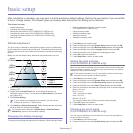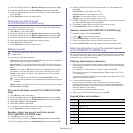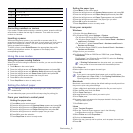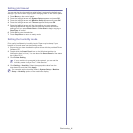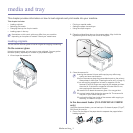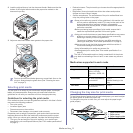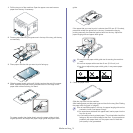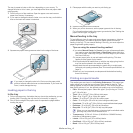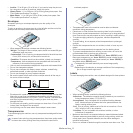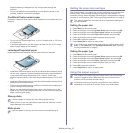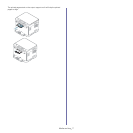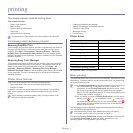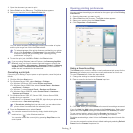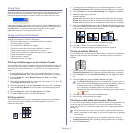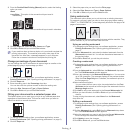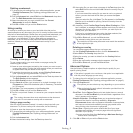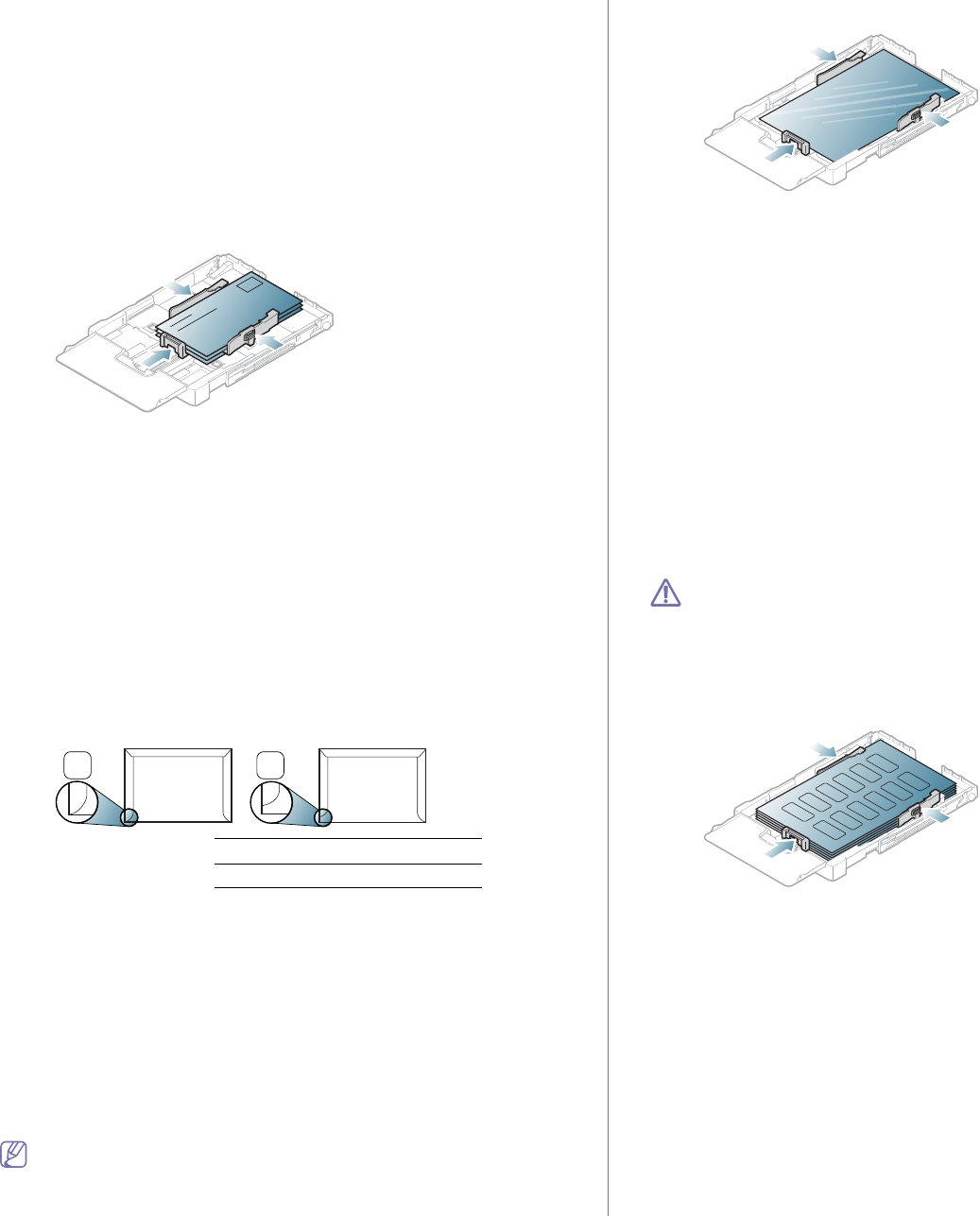
Media and tray_ 5
• Archive: 70 to 90 g/m
2
(19 to 24 lbs). If you need to keep the print-out
for a long time, such as for archives, select this option.
• Glossy Photo: 111 to 220 g/m
2
(30 to 58 lbs) glossy photo paper. See
"Print media specifications" on page 3.
• M
atte Photo: 111 to 220 g/m
2
(30 to 58 lbs) matte photo paper. See
"Print media specifications" on page 3.
Envelopes
Successful printing on envelopes depends upon the quality of the
envelopes.
To print an envelope, the stamp area is on the left
side and the end of the
envelope with the stamp area enters the printer first.
• When selecting envelopes, consider the following factors.
-Wei
ght: The weight of the envelope paper should not exceed 90 g/m
2
otherwise, jams may occur.
-Construction: Prior to printing, envelopes should lie flat with less than
6 mm (0.24 inches) curl, and should not contain air.
-Co
ndition: Envelopes should not be wrinkled, nicked, nor damaged.
-Tem
perature: Use envelopes that are compatible with the heat and
pressure of the machine during operation.
• Use only wel
l-constructed envelopes with sharp-and well-creased folds.
• Do not use sta
mped envelopes.
• Do not use envel
opes with clasps, snaps, windows, coated lining,
self-adhesive seals, or other synthetic materials.
• Do not use damaged or poorly made envelopes.
• Be su
re the seam at both ends of the envelope extends all the way to
the corner of the envelope.
1 Acceptable
2 Unacceptable
• Envelopes with a peel-off adhesive strip or with more than one flap that
folds over to seal must use adhesives compatible with the machine’s
fusing temperature about 170°C(338 °F) for 0.1 second. The extra flaps
and strips might cause wrinkling, creasing or jams, and may even
damage the fuser.
• For the best print qual
ity, position margins no closer than 15 mm (0.59
inches) from the edges of the envelope.
• Avo
id printing over the area where the envelope’s seams meet.
Transparencies
To avoid damaging the machine, use only transparencies designed for laser
printers.
In case of color printing using transparencies, the picture quality would
be lower than mono printing when the printouts are used on the
overhead projector.
• Transparencies used in the machine must be able to withstand
machine’s fusing temperature.
• Pl
ace them on a flat surface after removing them from the machine.
• D
o not leave unused transparencies in the paper tray for long periods of
time. Dust and dirt may accumulate on them, resulting in spotty printing.
• T
o avoid smudging caused by fingerprints, handle transparencies
carefully.
• T
o avoid fading, do not expose printed transparencies to prolonged
sunlight.
• Ensure that transparencies are not wrinkled, curled, or have any torn
edges.
• D
o not use transparencies that separate from the backing sheet.
• T
o prevent transparencies from sticking to each other, do not let the
printed sheets stack up as they are printed out.
• R
ecommended media: Xerox 3R91331 (A4), Xerox 3R2780 (Letter).
Base type transparency (ex. Xerox 3R91331) results in better image
and paper handling quality than paper backed (ex. Xerox 3R3028) or
removable stripe (3R3108) ones.
•Transparency with static electricity can cause image quality
problems.
•Depe
nding on the selection or storage conditions of the transparency,
jam or image scratch might occur.
Labels
To avoid damaging the machine, use only labels designed for laser printers.
• When selecting labels, consider the following factors.
-Ad
hesives: The adhesive material should be stable at your machine’s
fusing temperature (about 170°C(338 °F)).
-Ar
rangement: Only use labels with no exposed backing between
them. Labels can peel off sheets that have spaces between the
labels, causing serious jams.
-Curl: Prior to printing, labels must lie flat with no more than 13 mm
(0.5
1 inches) of curl in any direction.
-Cond
ition: Do not use labels with wrinkles, bubbles, or other
indications of separation.
• Make
sure that there is no exposed adhesive material between labels.
Exposed areas can cause labels to peel off during printing, which can
cause paper jams. Exposed adhesive can also cause damage to
machine components.
• D
o not run a sheet of labels through the machine more than once. The
21



